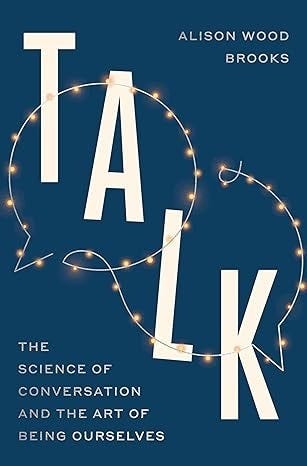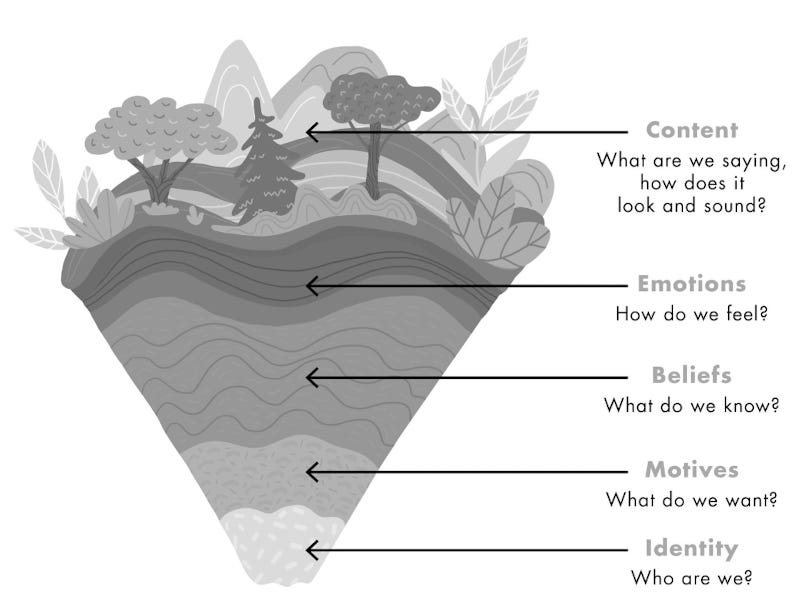Prof Picks: June Edition
Pop on your shades and let's head outside to enjoy some new brain food
It’s June in South Carolina. While it’s been unseasonably cool so far (65-75 degrees F), my kids are still brave enough to jump in the pool. This also means that as a dad, I’m compelled to swim too. So I’ve joined the legions of hip cold-plungers alongside Joe Rogan and lifestyle influencers out there. I can attest that the picture on the right is far more representative of my experience. But different strokes… am I right?


But let’s move into the content today. I’m still toying with the format for Prof Picks, but for now, I’m settling on two categories: Books and Podcasts. These are my two most frequented media for learning about the world, and sales at large, so it’s the way I’m going to lead off this inaugural Prof Picks post.
On My Shelf
Talk: The Science of Conversation and the Art of Being Ourselves
In our age of digital communication, I find that a lot of people (myself included) have at times forgotten or unlearned how to hold good conversations. For salespeople, this is a death trap that must be avoided. Good conversations are a core skill of elite salespeople. Conversation is the window to crafting, creating, and communicating value, so if we cannot guide conversation, we’re out of a job.
That dilemma led me to check out this book on the science of conversation by Professor Alison Wood Brooks.
Three big ideas stick out to me that I’ll summarize here:
Conversation Question Types:
The authors analyzed 15-minute conversations among strangers to develop categories for what questions were used and how their use evolved over the conversation. I like this analysis because it parallels a similar foundational framework we teach in sales classes (see SPIN selling). The authors identified four question types:
Introductory: Open up conversation and offer entry points to small talk
Mirror: Reciprocate a question that’s just been asked
Topic-Switching: Initiate a noticeably new topic and end the previous one (“
Follow-up: Probe deeper into something our conversation partner previously said
Conversation Jiu-jitsu
When it comes to shaping conversations that people want to be a part of, the authors find it helpful to map the constellation of human emotions on two dimensions:
Arousal: High vs Low Physical Signals of Energy
Valence: Pleasure vs Displeasure
This map offers us directional guidance on where we want to keep our conversations heading to engage our partner.
Importantly, we want to avoid conversations where our partners fall into the lower left quadrant (Low arousal-Displeasure). They’re sad, bored, and not energized. You’ve been in these conversations. And it’s the same ones where you feel yourself disengaging or finding ways to pull away. This is the fastest way to lose a potential customer.
So what are we after? We should view the conversation, especially first-time conversations, as a tiny flower that we don’t want to let die. This is where Levity - a conversational move that infuses positive energy - comes in. Levity is that mark of charm or charisma we commonly think of in sales reps. And in fact, it is the secret weapon of conversation jiu-jitsu. Simple acts of levity - unexpected joke, warm greeting, playful energy - are what shift conversational patterns into the upper right quadrant, and what engage the other party.
This is not to say that the other quadrants should be avoided. Make no mistake, the upper left quadrant is ripe for opportunity to have challenging conversations about making changes to a customer’s business. But is it the approach in a first conversation? Probably not.
Sources of Conversation Difficulty
In regular conversations, as in sales, you’ll run into situations where it’s going to be difficult to find common ground. These are the conversations that can lead to small spats, outright disagreements, or even relationship splits. We can often sense when a conversation isn’t going well, but the authors offer a good metaphor to understand the varying reasons for WHY it’s not going well. They classify conversation difficulty based on the sources of difference between two people.
These differences are:
Content
Emotions
Beliefs
Motives
Identity
The important takeaway I get from these sources is that deciphering what our differences truly are can be the gateway to improving or avoiding a conflict-filled conversation. Of course, addressing some sources requires far less preparation or effort (content, emotions) than others (beliefs, motives, identity).
What Are You Listening To?
I was all set to attend a concert this week by one of my favorite country singers, Chris Stapleton. Sadly, the concert date got pushed out a month due to equipment damage during travel. But Chris has a great song that offers the inspiration for the audio section of Prof Picks (it’s a slow burn, but an incredible song).
Like many of you, I listen to a lot of podcasts. These serve as my entertainment on my commute as well as on walks around my neighborhood. And if you’re not old enough to appreciate a good walk yet, trust me, it will come.
My podcast taste is eclectic. It ranges from really practical subjects on sales/business to practical life advice to absurdity like “How Did This Get Made?" While I’ll typically focus on the most applicable sales sound bites here, you may occasionally get a tangential connection to something outside the box.
30 Minutes to President’s Club
One podcast that I’ve stumbled on recently is the “30 Minutes to President’s Club” podcast, which focuses on tactical solutions to sales challenges (typically focusing on the SaaS sales space, but applicable to other industries). I find their podcast offers some of the most tangible actions that leaders and sellers can use immediately after the podcast is over. This type of transparency and directness is somewhat rare for podcasts on selling (typically a lot of fluff out there), so I appreciate their content.
One of the recent episodes from June focuses on Sales Coaching. This is a topic I find to be a struggle for most sales organizations, and this episode offers some good, tangible takeaways to build templated sales coaching conversations with your reps.
The “5 Whys” That Will TRANSFORM The Way You Coach Your Sales Reps
Hope you’re having a great June and enjoying the warmer weather at the pool. Everybody knows a tan salesperson is a more effective salesperson ;)









Love this! Definitely bookmarking the book—I've been listening to a lot of 30MPC lately too, and some of their tone frameworks really clicked when I was talking with a coworker the other day. They’d just come out of a networking conversation that felt flat, and when I asked if it had gone back and forth at all similar to the mirror/reciprocal piece you mentioned, they said it hadn’t.
That kicked off a good conversation between us about how that lack of reciprocity can be a big reason things feel off. I shared one thing I try to do in those situations- if I notice I’m not getting many questions back, I’ll lead more into my response by offering a short story or context, so it’s easier for the other person to pull on a thread. In their case, they were the more junior person in the room, and just walked away feeling disconnected.
All of it reinforced how much the energy and balance of a conversation matters and how you can guide that just by being intentional. Hope you’re having an awesome summer!